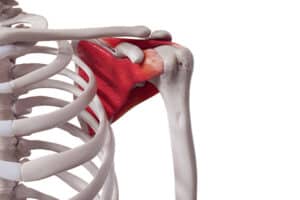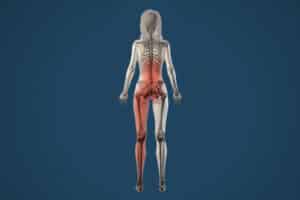Sciatica is a common condition that affects millions of people worldwide, causing pain that radiates along the sciatic nerve that runs from the lower back through the hips and down each leg. This condition can be debilitating and can significantly impact a person’s quality of life. While there are various treatment options available, the effectiveness of these treatments varies, and ongoing research continues to explore the best ways to manage and treat sciatica. This article will dive into recent scientific studies on sciatica, with a particular focus on the role of physiotherapy in treating this condition.
Understanding Sciatica: Causes and Symptoms
Before delving into the research, it’s essential to understand what sciatica is and what causes it. Sciatica is not a disease in itself, but a symptom of an underlying issue, such as a herniated disc, spinal stenosis, or degenerative disc disease. The hallmark symptom of sciatica is pain that radiates from the lower back down one or both legs, often accompanied by numbness, tingling, or muscle weakness.
Lifestyle and Home Remedies for Sciatica Relief
For many individuals, sciatica can be effectively managed with self-care strategies. While resting for a short period might offer some temporary relief, prolonged inactivity can actually exacerbate the symptoms. Incorporating some simple home remedies into your routine can help alleviate the discomfort associated with sciatica.
Cold Therapy
Applying cold therapy to the affected area can reduce inflammation and numb the pain. Use a cold pack or wrap a bag of frozen peas in a clean towel. Apply it to the painful area for about 20 minutes at a time, several times throughout the day.
Heat Therapy
After the initial 2 to 3 days of cold therapy, switching to heat can help soothe the pain. You can use a heating pad on its lowest setting, a hot pack, or a heat lamp to apply warmth to the painful areas. For ongoing pain, alternating between heat and cold packs can provide additional relief.
Stretching Exercises
Gentle stretching exercises targeting the lower back can also help reduce sciatica pain. Aim to hold each stretch for at least 30 seconds, and be sure to avoid any jerking, bouncing, or twisting movements to prevent further irritation. Visit Sciatica Stretching Exercises for more instructions.
Over-the-Counter Medications
Over-the-counter pain relievers like ibuprofen can be effective in managing sciatica symptoms. Always follow the dosage instructions provided on the label and consult with a healthcare provider if you have any concerns.
By integrating these self-care measures into your daily routine, you can manage sciatica symptoms more effectively and support your overall recovery. However, if the pain persists or worsens, it’s essential to seek professional medical advice for further evaluation and treatment.
The Role of Physiotherapy in Sciatica Management
Physiotherapy has long been considered a cornerstone in the management of sciatica. The goal of physiotherapy is to reduce pain, improve mobility, and prevent future episodes. Several recent studies have examined the effectiveness of physiotherapy in treating sciatica, with promising results.
Exercise Therapy
One of the primary components of physiotherapy for sciatica is exercise therapy. A study published in the Journal of Orthopaedic & Sports Physical Therapy (JOSPT) in 2021 evaluated the effectiveness of a structured exercise program for patients with sciatica. The study found that patients who engaged in regular exercise – including stretching and strengthening exercises – experienced significant reductions in pain and improvements in functional mobility compared to those who did not participate in an exercise program.
Exercise therapy is believed to work by improving the strength and flexibility of the muscles surrounding the spine, which can help alleviate pressure on the sciatic nerve. Additionally, exercise promotes blood flow to the affected area, which can aid in the healing process.
Manual Therapy
Manual therapy, which includes techniques such as spinal manipulation and mobilization, has also been shown to be effective in treating sciatica. A 2022 review published in The Spine Journal analyzed multiple studies on the use of manual therapy for sciatica and concluded that it can provide short-term relief from pain and improve overall function.
The mechanism behind manual therapy’s effectiveness is thought to involve the reduction of nerve root compression and the improvement of spinal alignment. However, the review also noted that more research is needed to determine the long-term benefits of manual therapy for sciatica patients.
Education and Self-Management
In addition to hands-on treatments, physiotherapy often includes education and self-management strategies. Educating patients about their condition, teaching proper body mechanics, and encouraging an active lifestyle are critical components of a comprehensive treatment plan.
A study published by the National Institute for Health and Care Excellence (NICE) emphasizes the significance of patient education in managing sciatica. The guidelines suggest that providing patients with detailed information about their condition, along with self-management strategies, can significantly improve treatment adherence and overall outcomes. This approach helps patients better understand their symptoms and the importance of staying active and engaged in their treatment plan, leading to more successful management of sciatica.
For more information, please refer to the NICE guidelines on sciatica management.
The Science Behind Sciatica Treatment
The science behind sciatica treatment continues to evolve, with physiotherapy remaining a key component of effective management. Recent studies underscore the benefits of exercise therapy, manual therapy, and patient education in reducing pain and improving function for individuals with sciatica.
For those suffering from sciatica, staying informed about the latest treatment options and working closely with a healthcare provider, particularly a physiotherapist, can help manage symptoms and improve quality of life. As the body of research grows, so too does the hope for more effective, personalized treatments for this challenging condition.
Get Started Today!
Seeing a professional physiotherapy provider like Nova Physiotherapy can offer expert care, personalized treatment, education, and a holistic approach to Sciatica treatment. If you’re considering physiotherapy, contact the friendly and experienced team at Nova Physiotherapy. We’re ready to help you on the road to better health.








